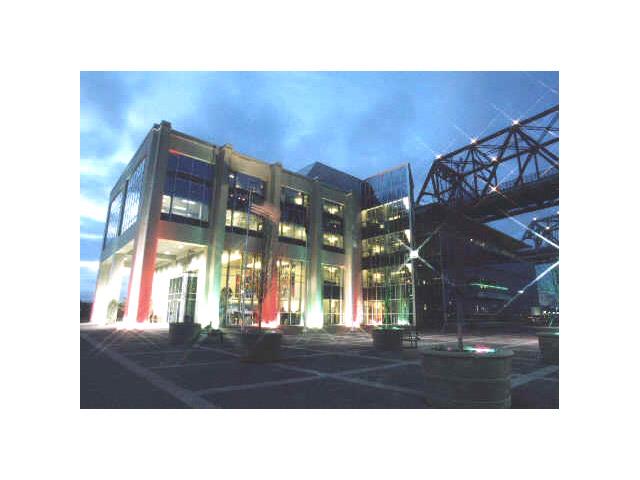 The Port of New Orleans's headquarters |
The Port of New Orleans, which will be a major force in the reconstruction of New Orleans, is in dire need of diesel.
Port president and CEO Gary LaGrange said the US Department of Transportation's Maritime Administration (MARAD) was "strongly considering" providing transport for fuel if the Federal Emergency Management Agency (FEMA) could provide the fuel.
The port has contacted Louisiana's homeland security staff to make a formal request to FEMA.
Diesel is needed to run ship-board generators to create electricity to run port operations crucial to getting supplies and aid to New Orleans.
The Mississippi River is now open in both directions simultaneously with a draft of 35 feet, during daylight hours. Six or seven MARAD ships and three navy ships are scheduled to dock at the port.
Among the ships is the Iwo Jima, a 900-foot-long, US Marine Corps helicopter carrier that will be used to launch helicopters to go on missions throughout the city.
The port headquarters building now has power and the Louisiana State Police SWAT (special weapons and tactics unit) team has temporary headquarters on the first floor.
"The port's riverfront terminals survived Hurricane Katrina in fairly decent shape," LaGrange said. "Although they are damaged, they are still workable once electric power and manpower arrive."
He said many repairs were needed to bring the port back to full capacity.
Cargo containers had been tossed around at the Napolean Avenue container terminal and the Nashville Avenue complex and remained strewn about.
Two gantry cranes at the Napolean and Nashville Avenue terminals were expected to have damaged electronic components. Another two gantry cranes were expected to work with electric power.
The conditions of terminals along the Mississippi River -Gulf Outlet, an alternate route for the Mississippi River, and the Industrial Canal were unknown, although they had no electric power and were severely flooded, LaGrange said.